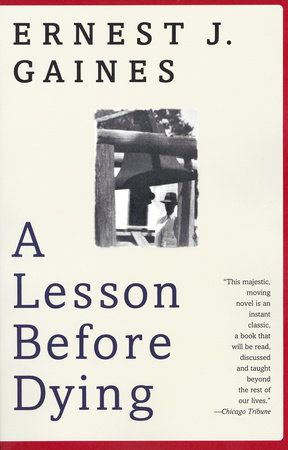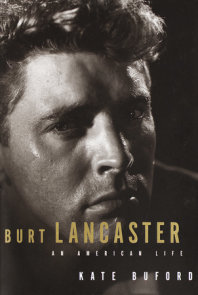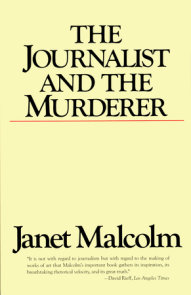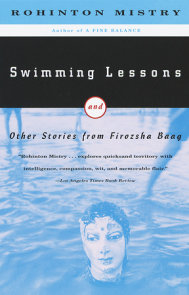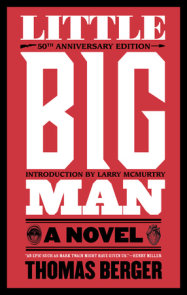TEACHING GUIDE
NOTE TO TEACHERS
To an interviewer’s question about the audience that Gaines hoped to reach, the author responded, "I write for the African-American youth in the country, especially the South, so that they can know who they are and where they came from and take pride in it…. [And for] the white youth of this country, and especially the South, because unless he knows his neighbor of three hundred years, he only knows half his history." The questions and topics that follow are designed for in-class discussion and written or oral assignments, to guide your students through A Lesson Before Dying and to help them approach the novel as a fully realized work of fiction that presents characters and themes recurrent in American literature and, at the same time, of intense relevance in the world of the 1990s. How can we preserve what is good of the past while destroying or transforming all that is evil, unjust, and demeaning? How do we balance the demands of society, family, and self? Can one person effect change in a society in which traditional ways of behavior are firmly entrenched? How does one balance conflicting loyalties? How does one preserve one’s convictions and personal beliefs in the face of constant attack and struggle?
While racism and the continuing degradation of prejudice are clearly at the novel’s forefront, students should also be encouraged to consider the book’s other issues and concerns: love and redemption; the pursuit of personal happiness; community values; the nature of religious belief; social dynamics and conventions; justice and the death penalty; familial relationships; familial and social responsibility, for example. They should also be encouraged to examine their own lives and society with a critical eye tempered by the carefully balanced amalgam of compassion, acceptance, and commitment to change that informs A Lesson Before Dying. They should keep journals in which they record their responses to the novel, their responses to specific questions in this guide, and their observations on their own lives, those of their families, and their communities.
ABOUT THIS BOOK
Ernest J. Gaines’s award-winning novel is set in a small Louisiana Cajun community in the late 1940s. Jefferson, a young black man, is an unwitting party to a liquor store shootout in which three men are killed; the only survivor, he is convicted of murder and sentenced to death. Grant Wiggins has returned home from college to the plantation school to teach children whose lives promise to be not much better than Jefferson’s. As he struggles with his decision whether to stay or escape to another state, his aunt and Jefferson’s godmother persuade him to visit Jefferson in his cell and impart his learning and pride to Jefferson before his death. In the end, the two men forge a bond as they come to understand the simple heroism of resisting—and defying—the expected.
In a story whose eloquence, thematic richness, and moral resonance have called forth comparisons to the work of Richard Wright, James Baldwin, and William Faulkner, Gaines summons the reader to confront the entire bitter history of black people in the South—and, by extension, America as a whole. A Lesson Before Dying is about the ways in which people declare the value of their lives in a time and place in which those lives seemingly count for nothing. It is about the ways in which the imprisoned may find freedom even in the moment of their death. Gaines’s novel transcends its minutely evoked circumstances to address the basic predicament of what it is to be a human being, a creature striving for dignity in a universe that often denies it.
The world into which Ernest James Gaines was born—on January 15, 1933—is essentially the world which he has distilled into the dense and complex world of his six novels and his stories. The land around River Lake Plantation—near New Roads, Pointe Coupee Parish, Louisiana—is the land around the Pichot plantation, near Bayonne, St. Raphael Parish, presented in A Lesson Before Dying. The black community in which Gaines grew up became "the quarter" of this 1993 novel, as well as providing the setting and social matrix of his previous works. The author’s vision of Henri Pichot’s cane fields stems directly from the fields in which Gaines himself worked as a child. As Gaines has said: "Though the places in my stories and novels are imaginary ones, they are based pretty much on the place where I grew up and the surrounding areas where I worked, went to school and traveled as a child. My characters speak the way the people speak in that area. They do the work that the people do there. Since most of my writing is about rural Louisiana, my characters are closely attached to the land." And that land provides the bedrock of a plantation world that is truly microcosmic, existing in and of itself—through the power of Gaines’s creative power—and exemplifying southern Louisiana, the South, and the nation itself.
Gaines’s fictive world and specific technical aspects of his works have been compared with those of William Faulkner, resemblances being remarked between the latter’s Yoknapatawpha County and Gaines’s plantation country. Comparisons have also been made between Gaines and other Southern writers. Gaines has insisted, however, that his presentation of his characters owes much more to Tolstoy, Turgenev, and the other great nineteenth-century Russian writers. To whatever extent Gaines’s complex social hierarchy and his portraits of those who benefit from and fall prey to that hierarchy may be compared with either Faulkner’s or Tolstoy’s, he has created a world and characters that are exclusively and gloriously his.
Gaines also has drawn considerably on the mores of black culture and the storytelling traditions of rural Louisiana. The result is a prose that is at once exact, idiomatic, stately, and true to the spoken language of actual people. The serenity and epic rhythms of Gaines’s prose contain and highlight the often anguished experiences and emotions of his characters. Of particular note in Gaines’s novels and stories is his fidelity to a community’s (black and white) shared ways of speaking and thinking in response to a firmly rooted history, persisting conventions, and the threat or promise of change.
A Lesson Before Dying won the 1993 National Book Critics Circle Award for Fiction, the most recent of numerous awards that Gaines has received. A Wallace Stegner fellow in 1957, a recipient of a National Endowment for the Arts grant (1967), a Guggenheim fellow (1971), and a John D. and Catherine T. MacArthur Foundation fellow (1993), Mr. Gaines has steadily been recognized for his achievement as a master of the novel and short story. In addition, one of his novels, The Autobiography of Miss Jane Pittman (1971), has become an undisputed classic of twentieth-century American literature and gave rise to the immensely popular, award-winning TV-movie adaptation starring Cicely Tyson.
DISCUSSION AND WRITING
Structure, Teaching, and Plot
1. What is the pattern of point of view and focus from chapter to chapter? Is there a correspondence or symmetry among the chapters or among groups of chapters?
2. Why does Gaines begin the novel with Jefferson’s trial, verdict, and sentencing but without providing the specific names of any of those involved? Does this presentation predispose us to accept what follows in a specific way?
3. What is the effect of the story’s being presented (except for two instances near the novel’s end) through the mind and voice of Grant Wiggins? Can Grant’s narrative be relied upon, or must we look beyond him for a full understanding of the novel’s action?
4. Chapters 29 and 30 constitute the two instances in which material is presented from points of view other than Grant’s. Why does Gaines move away from Grant’s point of view in these two penultimate chapters?
5. In several instances, as at the beginning of Chapter 13, the narrative jumps ahead in time and Grant relates events or episodes in flashback. Why are these events and episodes not presented directly as part of the ongoing narrative?
6. Is the time sequence of the novel—from late October to early April (two weeks after Easter)—of particular significance? Why is there a jump of two months, from just before Christmas to late February, between Chapters 19 and 20? Does the novel consist of two groups of chapters: Chapters 1-19 culminating in the Christmas season; Chapters 20-31 culminating in the Easter season? What are the implications of such a structure?
7. In Chapter 4, Grant poses several questions to Vivian regarding his assignment from Miss Emma and Tante Lou. Are these questions ever answered? If so, are they answered in ways that are anticipated or unanticipated?
8. Why does Gaines present the action on the morning of Jefferson’s execution day from multiple points of view—those of Sidney deRogers, Tante Lou, Reverend Ambrose, Sheriff Guidry, Melvina Jack, Fee Jinkins, etc.?
9. In Chapter 26, Vivian confronts Grant with a series of questions. What are the context and import of these questions?
10. In Chapter 28, Jefferson asks Grant a series of questions. What is the import of these questions and of Jefferson’s posing them at this point in the novel? Do these questions have any answers?
11. What does Grant learn—and with what effect on his outlook and sense of himself—about himself and others, about his community, about the nature of belief, and about the possibilities for change and improvement? [See pp. 166Ð 67.]
12. What ironies are implicit in the fact that the uneducated, deprived, barely literate, condemned victim becomes the focus of the dreams, aspirations, and desires of all the other characters?
13. To which character or characters does the "lesson" of the novel’s title apply? Does more than one lesson emerge in the course of the novel? Why is the title of the book not "Lessons Before Dying"?
Character and Conflict
1. How would you characterize Grant Wiggins’s relationships with, attitude toward, and behavior with each of the other main characters, black and white? What does each of these relationships reveal about Grant and about the racially structured society in which he lives?
2. How would you characterize the relationships among the novel’s other main characters?
3. Does Paul Bonin’s behavior vis-a-vis Jefferson and Grant—in contrast to that of Clarke—signify an improvement in white attitudes toward blacks from one generation to another? What is the significance, in Chapter 17 (exactly halfway through the novel), of Paul’s introducing himself to Grant by his full name and, at the very end of the novel, extending his hand in friendship and the offer of assistance?
4. Why do Miss Emma and Tante Lou, in Chapter 17, go to the sheriff’s wife with their request rather than directly to the sheriff himself? Is there a protocol that requires the black characters to address certain requests to white women and others to white men?
5. What are the purpose, effect, and social context of Miss Emma’s reminding Henri Pichot and Mrs. Guidry of all that she has done for their families over the years?
6. What do Jefferson’s diary entries (Chapter 29) reveal about him, before and after his trial, and about his understanding of his and his fellow blacks’ lives and their relationships with whites, and of his own fate? Can this chapter be seen as a summing up of the main themes and the main action of the novel?
7. Do Tante Lou, Miss Emma, and Vivian represent positive qualities that are exclusive to the black women of the quarter? Do any black men in the novel share these qualities? Does Grant himself take on any of Tante Lou’s and Miss Emma’s qualities by the end of the novel?
8. Why do Miss Emma and Tante Lou insist that Grant visit Jefferson in the parish jail and teach him how to die like a man? Why don’t they rely solely on Reverend Ambrose?
9. How would you characterize Grant’s approach to and treatment of his students in the early chapters? Does his treatment of them change in the course of the novel?
10. At the end of Chapter 12, Vivian offers to Grant an explanation of his not "running away." Is her explanation just? What does her explanation reveal about her and about her understanding of Grant and of his situation?
11. What conflicts are at work in the novel? How do they provide a context for, or shape the decisions and actions of, the characters?
12. What are the terms and implications of the conflict between what Jefferson wants before he dies and what each of the others wants for and of him? How is this conflict related to the novel’s other dominant conflicts?
13. Jefferson’s final spoken words to Grant, at the end of Chapter 28, are "I’m all right, Mr. Wiggins." What is the full impact of that statement?
14. In Chapter 27, what does the conversation between Reverend Ambrose and Grant reveal about each and about the lives of their people? Are Reverend Ambrose’s accusations true and just? Is he justified in lying to his congregation, as he admits he has done over the years? What levels of meaning and import are established in this dialogue?
Setting and Society
1. What details does Gaines provide to establish the identity and significance of the quarter and its history, the plantation, Bayonne, and the surrounding county?
2. What details reveal white expectations concerning blacks, black expectations concerning whites, and the resulting behavior of individuals in each group?
3. Citing specific characters or groups of characters as illustrations, can you map the society of the novel? How is the social world of the novel structured? What and who determines that structure? How do various blacks and whites claim, sanction, and enforce these social strata?
4. In Chapter 6, why does Pichot keep Grant waiting for "nearly two and a half hours"? Why does Grant wait? What does this scene reveal about the relationships among blacks and whites in Louisiana, the South, and the nation in the late 1940s?
5. How does Gaines provide a sense of the lives and work of the people of the quarter, of their living conditions, and of their activities? What is the range of their activities and their lives?
6. What elements of setting are emphasized? Are these elements presented in and of themselves, as contributing to a sense of setting, or in association with specific characters or groups of characters?
7. What is the significance of the name of the Rainbow Club?
8. How does Gaines establish the unchanging ways of the two communities, black and white? What details of individual lives and of communal life contribute to the lack of change?
9. In Chapter 3, Grant notices that some things in Pichot’s house have changed since he—Grant—was last there as a boy, and that some things have not changed. What has changed and what has not? Does Grant’s observation take in material objects only? Are there other instances in which Grant calls our attention to things that have changed or remained the same?
10. How does the layout of Bayonne correspond with that of the plantation and with the structure of society in St. Raphael Parish?
11. More than once, in connection with a kindness or word of understanding from Paul Bonin, Grant comments that Paul "had come from good stock." What does he mean by that and does it adequately explain Paul’s behavior?
Themes and Motifs
1. What are the dominant themes of the novel and how are they worked out in terms of the characters and their words and actions?
2. What issues of justice and civil rights are raised by Jefferson’s trial, imprisonment, and execution? How do these issues relate to the wider issue of capital punishment?
3. What does the remarkable attendance at the school’s Christmas program indicate about the quarter’s attitude toward Jefferson and his situation, and about their own lives?
4. What small, specific actions and expressions of the white characters reveal their deep-seated racism (e.g., the sheriff’s not asking Miss Emma and Tante Lou to sit in the two empty chairs in his office, in Chapter 23).
5. Identify as many as possible of the small, specific actions and expressions of the black characters that reveal their attitudes toward whites and their historically enforced conventions of behavior toward whites.
6. What is the nature of the conflict between Grant and Reverend Ambrose (in terms of Jefferson, Grant’s nonbelief, what each sees as best for his community, and so on)? What objects and actions seem to focus or crystallize this conflict [pp. 217ff.]?
7. Is Grant a hero, according to the definition he gives Jefferson in Chapter 24 [pp. 191Ð92]? Is Jefferson a hero? Do any of the other characters qualify as heroes according to Grant’s definition?
8. To what extent does Grant see Jefferson and his fate as an object lesson for the children? What kind of object lesson?
9. In Chapter 8, Grant watches the sixth-grade boys saw and split wood and recalls his own experiences as a student. What do his description and memories reveal about his own character and about life in the quarter over the years?
10. What are the full meaning and implications of "the burden," which Grant recalls as being passed from Matthew Antoine to himself?
11. In Chapter 17, both Paul and Grant say that they will do their duty in respect to Jefferson. Is the importance of doing one’s duty a dominant theme of the novel? Does each of the other main characters have a clear notion of his or her duty?
12. In Chapter 22, Grant notes that Jefferson looks at him "with an inner calmness now." What are the causes and implications of that inner calmness?
13. In Chapter 24, Grant explains to Jefferson a "myth" that continues to determine life in their community. What is that "myth"? Are there references to it or instances of its operation elsewhere in the novel?
14. How are the related themes of past-and-present and stasis-and-change bodied forth in the persons and actions of the characters? What is needed to break from the past without incurring alienation or death? Does Gaines resolve the thematic conflict between a respect for the past and the need to change and grow?
15. To what extent is the theme of fathers and sons important? Consider, for example, Grant’s relationships with the surrogate fathers, Matthew Antoine and Reverend Ambrose.
Imagery and Language
1. What Cajun and Creole words and idioms are used throughout the novel? With what frequency and in what contexts? What does the use of these words and idioms reveal about the hierarchy and conventions of the novel’s social order?
2. When and how does the "hog" metaphor appear in the novel, beginning with its first appearance in Chapter 1? With what purpose and to what effect? Do it and related animal images appear in any association or context other than those directly connected with Jefferson?
3. What images and descriptive elements are associated with the quarter’s church-school? How do they establish the church-school within the landscape and history of the quarter, within the lives of the main characters, and within the main action of the novel? What is the impact of the description, in Chapter 31, of the building’s foundations?
4. What is the importance in the lives of the black community of such sports heroes as Jackie Robinson and Joe Louis? What connection, if any, exists between references to Robinson and Louis and Grant’s definition of the term, hero, in Chapter 24?
5. Are images of the plantation–the river, the cane fields, the trees, the swamp, the cane itself, and so on–emphasized at critical points in the novel? Are they associated with specific characters, themes, and plot developments?
6. On the very first page Miss Emma is likened to "a great stone" and "one of our oak or cypress stumps" and in Chapter 15 Tante Lou is likened to "a boulder in the road." What do these and other instances of strongly rooted or anchored earth elements tell us about these two women? Are similar images associated with other characters?
7. Do the chains that Jefferson is required to wear when out of his cell signify anything beyond Jefferson’s situation as a specific, condemned prisoner in this specific jail?
8. What references to clothes occur in the novel? Do these references, taken together, clarify our view of the characters involved, black and white?
9. What does the radio mean for Jefferson and for Grant? Why do Reverend Ambrose and Tante Lou make such an issue of it (in Chapter 23)? What is the radio’s significance within the larger context of the novel’s action?
10. How, in what contexts, and in association with which characters, does Gaines make use of images of the Messiah or savior? Are these images always connected specifically with Christ or are they presented in more general terms?
11. Upon leaving Pichot’s house after discussing Jefferson’s impending execution, Grant says to Reverend Ambrose, "I’m going for a walk, a long walk in the opposite direction" [p.159]. Where does this walk take him, actually and symbolically?
Quotations for Discussion and Assignment
What does each of the following quotations reveal about the characters, themes, setting, action, and technique of A Lesson Before Dying?
1. "I was not there, yet I was there." [p. 3: the first sentence of the novel]
2. "Living and teaching on a plantation, you got to know the occupants of every house, and you knew who was home and who was not…. I could look at the smoke rising from each chimney or I could look at the rusted tin roof of each house, and I could tell the lives that went on in each one of them." [pp. 37-38]
3. "Everything you sent me to school for, you’re stripping me of it,’ I told my aunt…. `The humiliation I had to go through, going into that man’s kitchen…. Now going up to that jail…. Anything to humiliate me. All the things you wanted me to escape by going to school. Years ago, Professor Antoine told me that if I stayed here, they were going to break me down to the nigger I was born to be. But he didn’t tell me that my aunt would help them do it.’" [p. 79]
4. "I had gone to bars, to barbershops; I had stood on street corners, and I had gone to many suppers there in the quarter. But I had never really listened to what was being said. Then I began to listen, to listen closely to how they talked about their heroes, how they talked about the dead and about how great the dead had once been. I heard it everywhere." [p. 90]
5. "All the furniture in the room was old. Faded overstuffed chairs; an old overstuffed love seat; an overstuffed couch; and a rattan rocker with a pillow. The lamp tables were old, and the lamps and lamp shades looked just as old." [p. 155: referring to the furniture in the big house]
6. "We black men…stay here in the South and are broken, or we run away and leave them alone to look after the children and themselves. So each time a male child is born, they hope he will be the one to change this vicious circle—which he never does. Because even though he wants to change it, and maybe even tries to change it, it is too heavy a burden because of all the others who have run away and left their burdens behind…. I can give them something that neither a husband, a father, nor a grandfather ever did, so they want to hold on as long as they can. Not realizing that their holding on will break me too." [pp. 166-67]
7. "Me, Mr. Wiggins. Me. Me to take the cross. Your cross, nannan’s cross, my own cross. Me, Mr. Wiggins. This old stumbling nigger. Y’all axe a lot, Mr. Wiggins." [p. 224]
8. "i kno you paul an i kno ole clark and i kno you too shef guirty and you mr picho and mr mogan an all the rest of yall i jus never say non of this befor but i know yall everlas one of yall" [p. 230]
9. "Yet they must believe. They must believe, if only to free the mind, if not the body. Only when the mind is free has the body a chance to be free." [p. 251: Reverend Ambrose]
AWARDS
Winner of the 1993 National Book Critics Circle Award for Fiction
1993 ALA Notable Award
1994 YALSA Best Book for Young Adults
"This majestic, moving novel is an instant classic, a book that will be discussed and taught beyond the rest of our lives." —Chicago Tribune
OTHER TITLES OF INTEREST
Also by Ernest J. Gaines, available from Vintage Books:
A Gathering of Old Men, Catherine Carmier, In My Father’s House, Of Love and Dust, and Bloodline
James Baldwin: The Fire Next Time, Go Tell It on the Mountain, Nobody Knows My Name
David Bradley: The Chaneysville Incident
Claude Brown: Manchild in the Promised Land
Albert Camus: The Stranger
Stephen Crane: The Monster
Frederick Douglass: The Life and Times of Frederick Douglass
W. E. B. Du Bois: The Souls of Black Folk
John Ehle: The Journey of August King
Ralph Ellison: Invisible Man, Going to the Territory, Shadow and Act
Frantz Fanon: Black Skin, White Masks
William Faulkner: Absalom, Absalom!, Intruder in the Dust, Light in August
Albert French: Billy
Zora Neale Hurston: Mules and Men, Their Eyes Were Watching God
Martin Luther King, Jr.: "Letter from the Birmingham Jail"
Jonathan Kozol: Death at an Early Age, Amazing Grace
Malcolm X: The Autobiography of Malcolm X
Toni Morrison: The Bluest Eye, Sula, Tar Baby, Song of Solomon, Beloved, Jazz
Gloria Naylor: Mama Day, The Women of Brewster Place
Lewis Nordan: Wolf Whistle
Sister Helen Prejean: Dead Man Walking: An Eyewitness Account of the Death Penalty in the United States
Theodore Rosengarten: All God’s Dangers: The Life of Nate Shaw
Alice Walker: The Color Purple
Richard Wright: Black Boy, Eight Men, Native Son.
ABOUT THIS GUIDE
This teacher’s guide was written by Hal Hager. Hal Hager taught literature at several colleges for ten years and has been active in editing, marketing, reviewing, and writing about books and writers for more than twenty years.
COPYRIGHT
Copyright © 1997 by VINTAGE BOOKS
For more information, please email acmart@randomhouse.com or write to:
Random House Academic Marketing
1745 Broadway 20-2
New York, NY 10019
×
Become a Member
Just for joining you’ll get personalized recommendations on your dashboard daily and features only for members.
Find Out More Join Now Sign In






